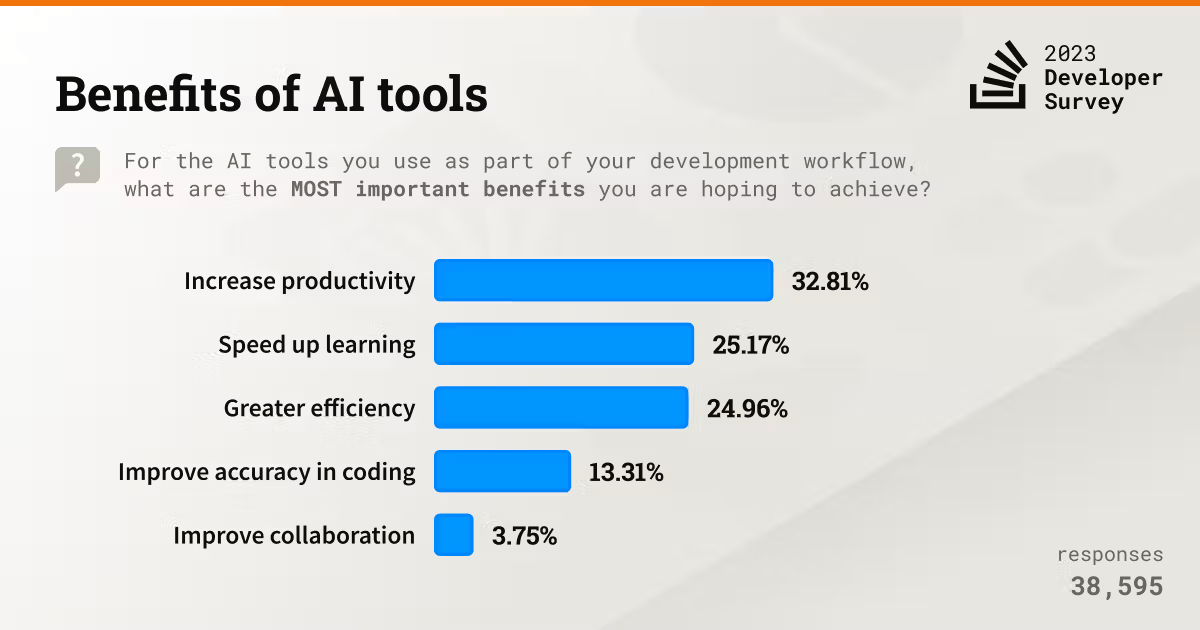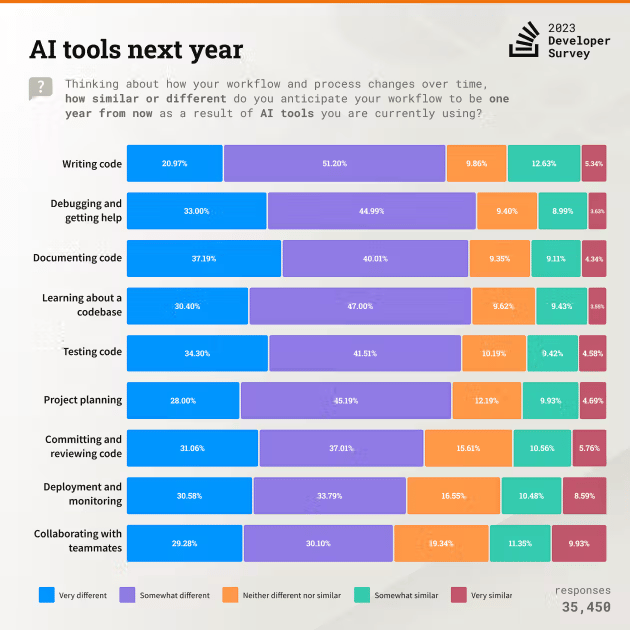The Rise of the Everyday Builder
AI and no-code tools have sparked a new class of software developers. What once belonged to specialists is now in the hands of millions, who use it to build products, solve problems and bring ideas to life.

Before spreadsheets, only a handful of people could model data or run projections. The same was true for early computers, which had to be operated by trained technicians. Over time, both tools became simple enough for anyone to use, and changed what it meant to work, learn, and create.
In 2025, that story is repeating itself. Developing software isn’t just for professional programmers anymore. Thanks to low-code platforms and AI copilots, millions of new builders are emerging; people who can describe what they want in plain language and watch it take shape.
Below, we’re kicking off a three-part series on how software creation is evolving. In this piece, we’ll trace the rise of traditional, low-code, and AI-assisted developers. In the next two articles, we’ll explore what’s happening today, and where this new wave of builders is heading.
Building Software in the 2010s
A decade ago, “software developer” meant one thing: writing code by hand.
In the mid-2010s, there were 19 million traditional developers around the globe, according to Evans Data Corporation.
These were the people who built every digital system that powers daily life. Their work shaped how we search, communicate, and do business. They created:
The algorithms behind search engines
The interfaces that define mobile apps
The platforms that drive e-commerce and digital payments
The databases that store global information
The tools that enable online communication and collaboration
The cloud infrastructure that supports modern computing
Every product, service, and system we rely on today traces back to this group. They were architects of the internet age, translating human ideas into logic and code. Each line they wrote carried immense leverage, turning abstract concepts into products that billions now use.
All this happened despite the fact that, for years, creating software wasn’t something most people could do. It required fluency in syntax, logic, and specialized languages. Yet, within those same barriers, the groundwork for change was being laid. The frameworks, libraries, and tools built during this period became steppingstones to the next era. Where anyone, not just trained engineers, could start to build.
The First Wave of Democratization
The first major expansion of who could build software came with the rise of low-code and no-code platforms.
These tools opened the door to what Gartner calls citizen developers: professionals outside of engineering who can design apps, workflows, and solve problems on their own.
In 2020, less than a quarter of new applications were built that way. This year, Gartner projects the number will climb to 70 percent.
To put that in perspective, Microsoft reported that by 2022 over 20 million people were building with its Power Platform. That’s roughly the total population of professional developers from just a few years prior.
These numbers aren’t just about the adoption of new tools; they represent a shift in how organizations innovate. Instead of relying entirely on engineering teams, companies can now empower employees in operations, marketing, or finance to build the tools they need. Problems that once sat in backlogs can now be solved by the people closest to them.
The spreadsheet revolution we referenced above offers the closest parallel.
Before Excel, only trained analysts could model data or run scenarios. Today, working with spreadsheets is central to many roles and a secondary skill in countless others. Low-code and no-code tools are doing the same for software creation, taking what used to be a technical skill and making it a universal one.
The Second Wave: AI-Assisted Development
The next leap came with AI-powered coding tools.
In 2021, OpenAI released Codex (not a typo: this model is different from the 2025 equivalent), the model behind GitHub Copilot. Within two years, AI assistance became a standard part of software development.
In Stack Overflow’s 2023 Developer Survey, 44 percent of developers said they already used AI tools, and another 26% planned to start. GitHub’s own research found even higher adoption: 92 percent of US-based developers reported using AI either at work or in their personal time.
AI assistants like Copilot, ChatGPT, and Memex enable people to describe what they want in natural language and see it turned into working software. For experienced programmers, these tools accelerate routine work, automate debugging, and increase output. For newcomers, they remove many of the barriers that once kept people from coding at all.
In our view, it’s here that the wall between “people who can code” and “people who can’t” really started to crumble. What used to take years of learning now takes minutes of prompting. The result is a new kind of builder: one who collaborates with AI to create functional software without needing to master every command or syntax rule.
This shift is also creating a unique category of tool. Not just assistants that write snippets, but systems that can plan, build, and refine entire software workflows.
This is the direction platforms like Memex are moving toward: software that works alongside people, reasoning through problems and building with them. Essentially, an AI software engineer for humans.
Visualizing the Shift
In just over a decade, the number of people building software has surged from roughly 16 million to more than 150 million, based on the size of GitHub’s developer community alone.
This isn’t just a bigger headcount; it’s a reframing of what it means to be a developer. The person dragging blocks in a visual builder or prompting an AI to generate code is as much a creator as the engineer writing Python or C++.
Traditional coders are now part of a much broader creative class: analysts, designers, students, entrepreneurs, and everyday problem-solvers. Together, they make up a global community defined not by technical titles, but by the shared ability to turn ideas into working software.
As AI-assisted and low-code tools become standard, building software will feel less like a profession and more like a practical skill; something as common as writing a document or designing a presentation. That shift will accelerate as tools grow smarter, context windows expand, and the learning curve continues to shrink. The idea of a “vibe coder” will eventually fade, much like the old term “computerist,” and be replaced by something much simpler: people using technology to build what they need.
A More Inclusive, Complex World
When more people can build, more problems get solved.
For instance:
A teacher can design a tool that helps students learn at their own pace
A doctor can build a tracker to monitor patient progress between visits
A business owner can automate scheduling, billing, or inventory
A nonprofit can develop systems to coordinate volunteers and donations
A researcher can model data without relying on a full engineering team
As access to creation tools expands, innovation becomes faster, more distributed, and closer to the problems it aims to solve.
This trend also makes the technology ecosystem more inclusive. Barriers that once kept people out—long learning curves, limited access to education, and rigid hiring pipelines—begin to erode when anyone can create software.
In this new landscape, the most impactful tools are the ones that collaborate with the person building. Rather than acting as template generators or assistants that output code fragments, they work alongside the creator to help plan, assemble, and iterate on real software.
This is the shift that Memex is designed around: software that adapts to people, not the other way around.
Democratization, however, does introduce new challenges. Organizations must now ensure quality, security, and governance across a growing number of user-built applications.
AI-assisted coding adds several layers of complexity, including:
Overreliance on AI-generated suggestions
Inconsistent code quality across projects
Security risks introduced through generated code
Limited testing and documentation in smaller teams
Difficulty with version control as AI models evolve
Still, these are good problems to have. They’re the inevitable growing pains of a world where creation is no longer exclusive. For every challenge, there’s an opportunity to rethink how teams collaborate, how systems scale, and how innovation happens when everyone has the tools to build.
What Comes Next
Software once ate the world. Now, the world gets to help cook.
What began with a few million coders has grown into tens of millions of citizen developers and AI-assisted creators. The ability to build is no longer limited to engineering teams; it’s becoming a shared skill across every industry.
From startups to global enterprises, the next phase of innovation will depend on how effectively organizations empower people to turn ideas into working tools.
In Part 2 of this series, we’ll take a closer look at the present moment: how companies are integrating these tools into daily work, how teams are adapting, and what this means for productivity, collaboration, and speed.
Then, in Part 3, we’ll explore the road to 2030 and beyond, when the number of builders could reach a billion. At that scale, software creation will feel less like a specialized craft and more like a basic form of problem solving.
And once building becomes that accessible, the kinds of ideas that can become real will expand in ways we’re only beginning to imagine.
Want to become an Everyday Builder? Join the tens of thousands of users already building with Memex, and join our Discord community for support and recommendations!

